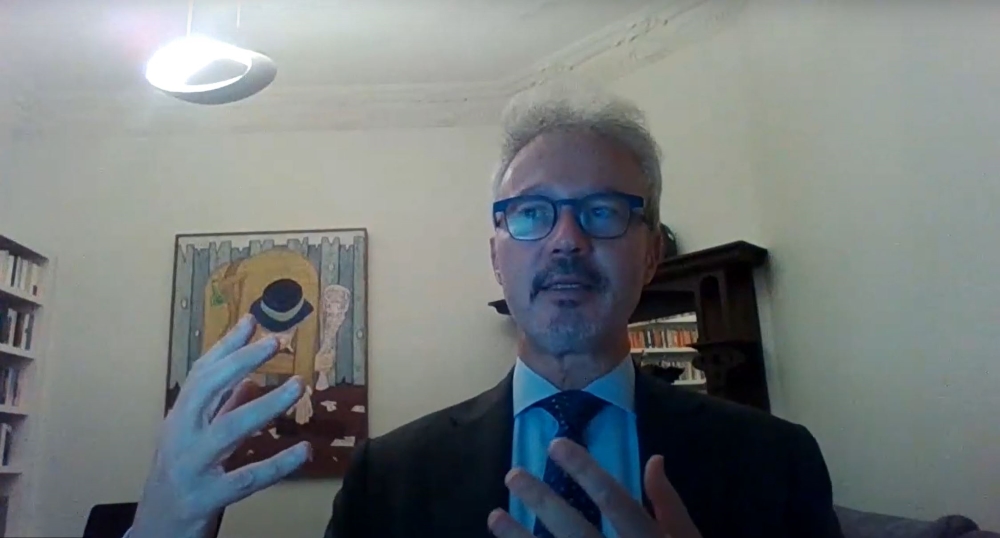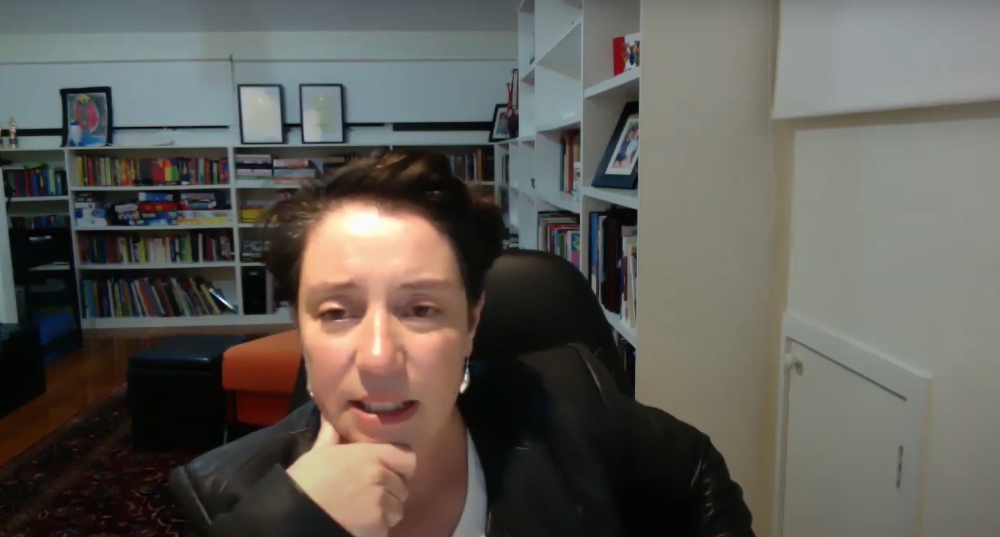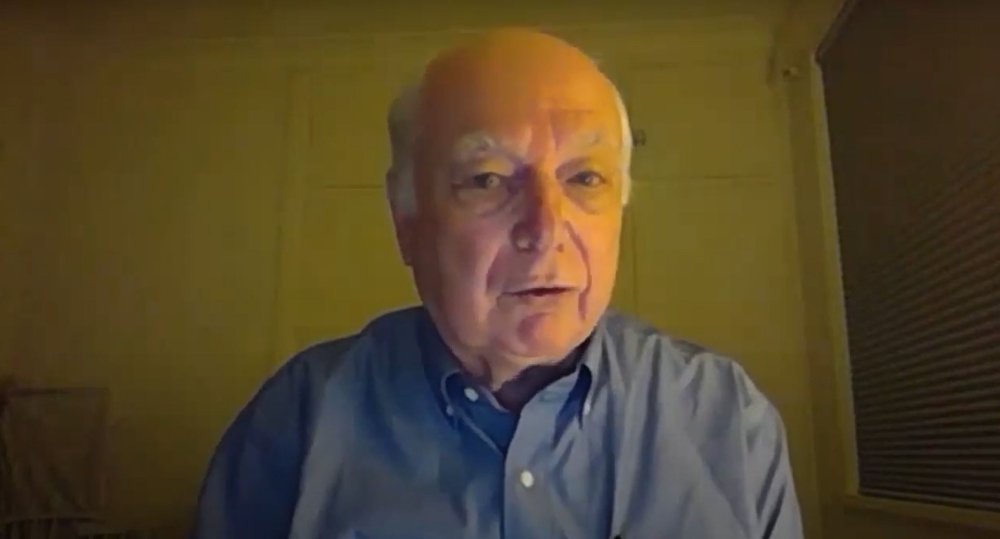Putting Free Speech at Work through the legal wringer

Is it possible to reconcile employees’ speech rights with the interests of employers?
Some of Australia’s best legal minds were brought to bear on an topic of free speech at work in a recent webinar hosted by the ANU College of Law as part of its 60th anniversary celebrations.
The webinar was proudly sponsored by BAL Lawyers and supported by partners including the Australian Academy of Law, the ACT Bar Association, the ACT Law Society, the Institute of Public Administration Australia, and Australian Labour and Employment Relations Association ACT.
Professor Sally Wheeler OBE MRIA FAcSS FAAL, Dean of the ANU College of Law and Pro-Vice Chancellor, welcomed the virtual audience and delivered an Acknowledgement of Country, noted that the topic of free speech at work had come under intense scrutiny in the past year, and introduced an esteemed panel of legal and policy experts.

Professor Sally Wheeler OBE MRIA FAcSS FAAL
ANU Pro-Vice Chancellor (International Strategy); ANU College of Law Dean
Professor Wheeler then expressed her pleasure in having one of the ANU College of Law’s alumni moderating the evening’s discussion — Kieran Pender, ANU Law Visiting Fellow and Senior Legal Adviser at the International Bar Association.
Kieran opened the discussion by underlining the topic’s significance:
‘This is something that affects every Australian.
It’s an incredibly divisive and polarising subject matter. People have very strong opinions on the ability of employees to speak freely… I don’t think there are easy answers… because these are complex legal issues.
This is an area that touches on constitutional law, employment law and sub-categories within that: discrimination law, whistle-blower protection and so on. All under-scored by contested and vitally important questions of free speech.’

Kieran Pender
International Bar Association Senior Legal Advisor; ANU Law Visiting Fellow
The Folau Case, the Banerji Case, the McIntyre Case… Are they the iceberg, or just the tip of the iceberg?
Josh Bornstein, National Head of Employment Law at Maurice Blackburn, was the first to address this question.
‘It’s almost impossible to know precisely the scale of the issue because we certainly know of some very well publicised cases in Australia… but I would suggest that there has been an increase in the number of cases of this kind because the behaviour of the private sector has fundamentally changed.
…I would argue that the reach of employer control is growing… but there are some fundamental drivers of private sector change in the last, I would say, 40 years…

Josh Bornstein
Maurice Blackburn Lawyers National Head of Employment Law
Josh suggested that:
‘One of the responses… or strategies that the private sector has developed… is a greater emphasis on brand management, and brand management being used to try and reduce the prospect of regulation, legislative intervention…
…So we’ve seen a professionalisation of brand management, a more sophisticated version of brand management.’
He went on to say:
‘At the same time… we’ve had an internet revolution… The ability of people to generate their own news, to speak to the world on a Twitter account, to participate in political debate.
Technology has allowed greater surveillance by corporations of their employees, but it’s also allowed people to participate in a way that could be argued to be quite democratic, in some ways, in public debate and discourse.
Unfortunately, as we all the know, the internet revolution has also heralded some very unsavoury behaviour including mobbing, mobbing on social media.’
Josh concluded his analysis, by saying:
‘So where you have controversy and mobbing clash with brand management, what you will find is increasingly employees human rights are being sacrificed on the altar of brand management.’
Kate Eastman SC of New Chambers took a different tack to the question.
‘I think it really starts with the employees and what it means to go to work, and our expectations around workplaces in terms of what we can and can’t do.
And I do think that what we’ve seen over the last 30 years, is a sense of employees not just coming to provide labour for their employers, but an expectation that their workplace should be more than just “clock on, clock off” and get a pay cheque.’

Kate Eastman SC
New Chambers
Kate said employees now expected a safe workplace, one that provides opportunity and equality in the work undertaken. Workers are also more aware of their rights and their ability to exercise free speech.
She agreed that the internet and the ubiquity of mobile phones has fundamentally changed how we communicate and how we express our ideas: whereas people used looked to mass gatherings in the form of protest as a traditional form of exercising their free speech, digital technologies give people far more personal freedom to express views in different ways.
She closed her response by saying:
‘The cases that we’ve seen in recent times… may, in a sense, reflect the issues that Josh is talking about.
But in terms of… what lies beneath, it’s really a change in our expectations as workers to what we can and can’t do in our workplaces, combined with our capacity to exercise our freedom of expression through social media.
And so, I… see that as being the primary change, rather than it being all about corporatised brand damage.’
To what extent do we have constitutional protections for employee free speech?
Distinguished Professor Adrienne Stone responded by saying that she is often asked questions such as ‘Don’t we have enough protection for freedom of speech under the Constitution?’ and ‘Don’t we need a First Amendment?’.

Distinguished Professor Adrienne Stone
University of Melbourne
The first point Adrienne made was that the First Amendment is not a good comparison: ‘The First Amendment… does contain very strong protection for freedom of speech but it’s almost entirely exceptional in world terms’.
She went on to say:
‘Almost every constitution in the world — in fact every democratic constitution in the world — contains some protection for freedom of speech.
What you get under The First Amendment is completely different to what you get everywhere else.
In particular The First Amendment… is characterised by two things… doctrinal rigidity, and it’s this core non-redistributive principle that means that the State’s not entitled to level the playing field for speakers…
…Given that I think many First Amendment scholars now talk about The First Amendment as being ‘weaponised’ against the values from which it sprang, if we’re going to have a comparative discussion let’s put The First Amendment aside.’
Adrienne suggested a better international comparison was with Section 2b of the Canadian Charter and went on to say that she felt the failures seen in cases like Banerji don’t actually spring from the underlying constitutional problem:
‘They’re a failure to exploit what our constitution really reasonably can be taken to have provided…
…It’s fair enough to say there’s nothing in the Constitution that says everyone has a right to freedom of speech, but the Constitution has these really important words in it: “The Parliament shall be, both House of Parliament shall be, directly chosen by the people”.
That’s a very profound democratic statement and the Court has said that means we need all the information that you would need in order to make a true choice as an elector.
That’s actually, potentially, very powerful protection for freedom of expression… it’s maybe a little bit narrower than a straight-out expression guarantee… but in cases like Banerji — which is core political communication — the problem isn’t in the coverage, it’s in the weakness of the protection, right? Not in what it covers, but in how much protection it gives to it…
…I don’t think there’s anything wrong with the underlying structure of the Constitutional doctrine. In fact the principle that we use to determine the limits on freedom of political communication is imported from Canada’.
Adrienne concluded by saying:
‘So we actually have a really important piece of constitutional text that protects political communication and the doctrine limiting it… it’s ubiquitous around the world.
So if the High Court of Australia is not — as I think it didn’t in Banerji — providing adequate protection for freedom of expression, I don’t think we can necessarily point the finger at the underlying constitutional problem.
I think that there’s something else going on, and there’s something deep in the reasoning of the court that need’s teasing out.’
Why are public servants limited in their political engagement? And how has that changed over time?
Professor Andrew Podger AO provided some historical context to the position of the public service as an Australian institution — not explicitly referenced in the Constitution, but implicitly recognised by the High Court on a number of occasions.

Professor Andrew Podger AO
ANU College of Arts & Social Sciences
Andrew began by referencing the Northcote-Trevelyan Report on the UK Civil Service from 1854. which started the idea that the public service should be professional with employment based on merit to ensure efficiency and to avoid nepotism and political interference.
He then referenced a US lecture given by Woodrow Wilson in the late 1880s which further clarified the need for the separation between politics and administration. During this lecture Woodrow laid out two principles at play in a democracy: the democratic principle of rule by majority and another principle of professional administration that’s fair to all and doesn’t involve the tyranny of the majority that constrains the political control of an administration.
‘Those two principles obviously have some tension but they are both extremely important and the values of that professional administration — of impartiality and non-partisanship — necessarily constrain free speech by public servants.
The public has got to have confidence that the public service is in fact impartial and non-partisan. At the same time good public administration does require public engagement by public servants… it’s not as if there’s to be no public engagement, but there are constraints on political comment.’
Andrew said that for a large number of public servants political comment is not really an issue. Whether it is or not, depends on what they are commenting on, how they comment, and their particular role in the public service. For many — provided they are not expressing views on their immediate role — it is not a particular issue.
Things were different back in 1970s Australia, with a blanket prohibition through regulation on public comment. Andrew explained that the regulation was removed by the Whitlam Government and there had been some relaxation over time.
The Code of Conduct for Australian Public Servants was rewritten following the Public Service Act of 1989 which identified the key values of a professional public service, including impartiality and non-partisanship. The guidelines on how this should operate were also rewritten when Andrew was Australian Public Service Commissioner. Further guidelines have since been developed in response to changes in media and social media.
‘I think one of the problems is that a lot of public servants aren’t quite sure what it means for them, and what the distinction should be for different types of public servants, and different types of comment, and ways of commenting…
…I think one of the positives in the Banerji case was the judgement by Justice Edelman who set out six criteria that might be used to advise public servants on when and how they can use public comment.’
Further aspects considered by the panel
The panel went on to discuss free speech in the private sector, contractual arrangements under employment and anti-discrimination law, and the application of codes of conduct.
They also responded to audience questions relating to social media account disclaimers, the relationship between religious speech and freedom of speech, the challenging environment in which public sector journalists find themselves working in, and the harm that lengthy investigations can have on employees.
A video of the entire panel discussion on free speech at work is available below.
